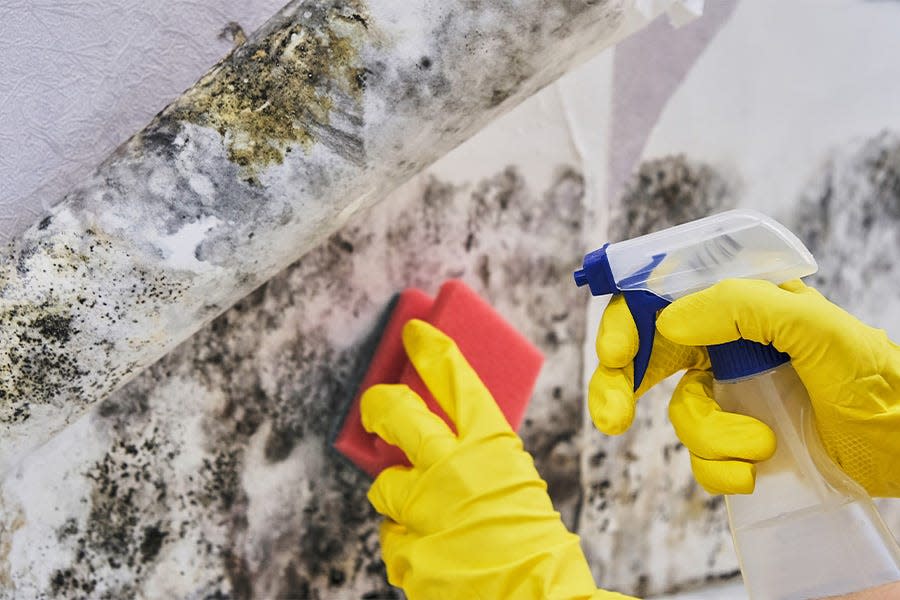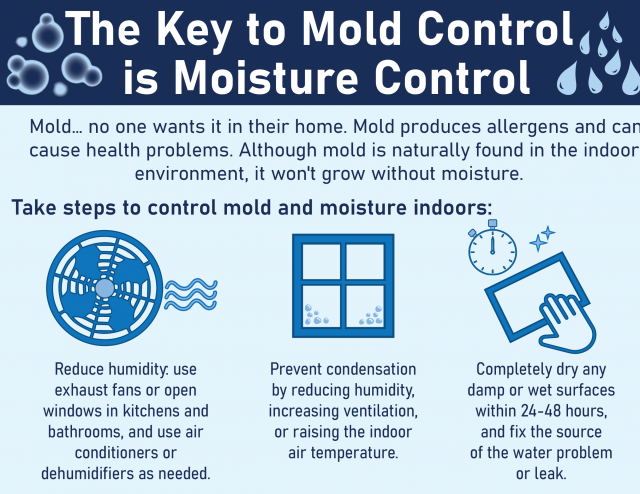Steamy, historic Savannah drives Georgia's inclusion among America's moldiest states

Savannah's sauna-like summers and soaking storms have helped Georgia land near the top of a less-than-flattering list: America’s moldiest states.
Rankings by FDP Mold Remediation, a national company specializing in the treatment of infested homes, placed the Peach State at No. 7 in the nation, not far behind America’s fungi frontrunner, Florida.
In fact, Southeast states accounted for the top 9 spots on FDP’s list.
The company based its "Mold Index” on four criteria: heat, humidity, rainfall and age of homes, with each assigned a possible 10 points. Florida scored a total of 38.76 followed by Mississippi (38.66). Louisiana (38.52), Alabama (37.69), Tennessee (36.51), Arkansas (36.15) and Georgia (35.73).
Predictably, arid Western states checked in as the least mold-laden, led by Nevada with a low score of 25.46.
The report doesn’t single out cities but, if it did, Savannah’s balmy climate (a year-round average of 69.3 degrees compared to 65.5 degrees statewide), perpetually muggy coastal conditions and persistent flooding would likely contribute to a mold threat that exceeds that of Georgia as a whole.
Fueled by moisture; accelerated by climate change
Molds, which thrive in moisture, play a crucial role outdoors by breaking down dead organic matter such as fallen leaves, dead trees and other debris. It’s when spores grow indoors that problems arise.
"Mold is irritating to everybody,” said Dr. Michael Blaiss, clinical professor at the Medical College of Georgia at Augusta University and executive medical director at the American College of Allergy, Asthma, and Immunology in Roswell. “It can irritate the eyes, the nose, and cause respiratory problems and severe coughing. But it can be a really severe problem for people with mold allergy. They can develop eye and nasal problems, and it can trigger life-threatening asthma if you have that condition.”
A 2020 assessment by the U.S. Department of Energy’s Lawrence Berkeley National Laboratory found that nearly half of American homes contained potentially unhealthy “dampness or mold.”
As FDP’s report notes, older homes tend to be more vulnerable to mold. That is significant in a hot, sticky coastal city like Savannah, which has built a national reputation on its historic architecture.
“An older home can be more susceptible because of aging structural materials that provide more ways for moisture to enter the house,” explained Pamela Turner, a University of Georgia professor who specializes in indoor environmental issues affecting homes. “The siding comes off, the shingles on the roof get loose, the paint starts chipping, the pipes start leaking, etc. All of these things can provide openings for water to seep into the house.”
FDP’s report notes that 4% of Georgia homes were built before 1940. In Savannah, the share of homes in that category is more than four times higher, according to U.S. Census data.
Characteristics unique to Savannah’s oldest neighborhoods contribute further to mold risks, including long rows of connected homes that leave little impervious surface to absorb water and poor street drainage that leaves standing water after heavy rain.

First-floor “garden” apartments in the city’s signature historic areas can present a particular challenge because many sit below street level, making them vulnerable to rainwater runoff.
“It becomes even more important for renters and buyers to carefully inspect the unit and surrounding environment,” Turner advised. “Drainage off the building and around the unit are key to preventing major mold problems.”
Checking gutters and downspouts, as well as adjacent landscaping, could reveal potential issues.
“Also, it would be good to visit the area during a heavy rain,” Turner added.
In Savannah, many pre-1940s houses also are in lower-income areas where owners have fewer financial resources to make structural improvements that would help prevent moisture from entering.
Federal funding and tax credits aimed at weatherizing homes and increasing energy efficiency could help protect those homes from the threats of mold, and programs are up and running to identify qualified owners and help them navigate the process.
Meanwhile, heavier precipitation, more intense storms and rising sea levels — all driven by a warming climate driven primarily by heat-trapping pollution from the burning of fossil fuels — contribute to increased risks of flooding and associated health impacts.
Rising ocean temperatures also play a role in intensifying hurricanes as they move through the Atlantic Ocean and Gulf of Mexico and, potentially, over the Georgia coast.

Out of the closet
Moisture is mold’s best friend, which is why Turner recommends investing in a relatively inexpensive humidity-measuring instrument known as a hygrometer.
Indoor humidity readings should be below 60%, she said, but “reaching that level in the South can be challenging.”
That’s why effective ventilation is crucial to limiting moisture in a home.
Turner pointed to musty closets as often-welcoming hosts for mold.
“Rarely is there an air vent in a closet and most people have their closets full of stuff and the door shut,” she said. “You can improve the closet environment by removing one-third to one-half the contents and leaving the door open or adding louvered doors.”
Using exhaust fans when cooking, showering and bathing helps to remove excess moisture, but only if that moisture is being pushed outside and not recirculated in the house, Turner added.
Paying careful attention to potential access points for water like loose siding, decayed or damaged frames around windows and doors, and cracks in the foundation is the first line of defense against mold.
“You should inspect your home at least twice a year and make repairs while they are still minor,” Turner advised. “If you are a renter, talk with your landlord about any concerns or issues that arise.”
When mold does invade a home, its inhabitants often experience related symptoms – typically like those caused by a cold or seasonal allergy – without visible evidence of an infestation.
"Sometimes people have to knock down walls to find it,” said Blaiss, from the Medical College of Georgia. “And you may need to bring in a professional to really clean out the affected areas.”
It’s also best to just replace carpeting or flooring that has been exposed to floodwater, he added.
About 10% of Americans are susceptible to mold allergies, with about half of those experiencing symptoms, according to the American College of Occupational and Environmental Medicine.
Anyone falling in the latter category should seek treatment as soon as possible, Blaiss noted.
That can include antihistamines for nasal issues and albuterol inhalers for daily asthma control. Severe asthma may require stronger medications.
All things considered, state rankings based on indoor spore potential should be taken with a grain of salt — or at least a squirt of fungicide, Blaiss cautioned.
"I wouldn't move from Georgia or any of those other states to Nevada or Colorado just because I'm afraid of mold," he said. "In fact, they have their own problems. If you have eczema, you're worse in those areas with the lower humidity because it makes the skin worse.
"So, you just trade one thing for another."
John Deem covers climate change and the environment in coastal Georgia. He can be reached at jdeem@gannett.com
This article originally appeared on Savannah Morning News: Georgia ranks among America's moldiest states, report says
